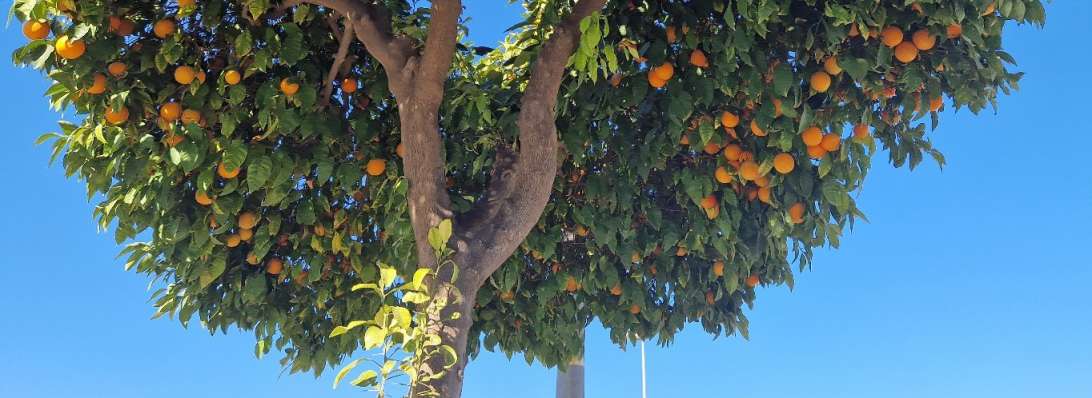Welcome to the marmalade place.
- Why marmalade?
- What type of marmalade do you make?
- What variants do you make?
- How do you harvest the oranges?
- When do you harvest?
- What areas do you harvest from?
- Marmalade on the map
- What is what3words?
- What’s that got to do with it?
- Orange tree photo gallery
- Classic Carlos Alcaraz Edition
- The mapped orange trees
- 2024 availability
- Recipe
- Labels
- Nothing else matters
- Order
- Pay delivery
- Want free marmalade?
Why marmalade?
First of all, it’s delicious!
And nothing else matters.
Ever since I passed the big five oh mark I like bitter ever more.
Olives, pickled and fermented foodstuff, brines, cacao, orange, kombucha etc.
My mother was a fan of bitter orange and whenever she returned to Murcia, her native land, she would always return with a suitcase load of 🍊 to cook in London.
I continue the tradition in her honour❤️.
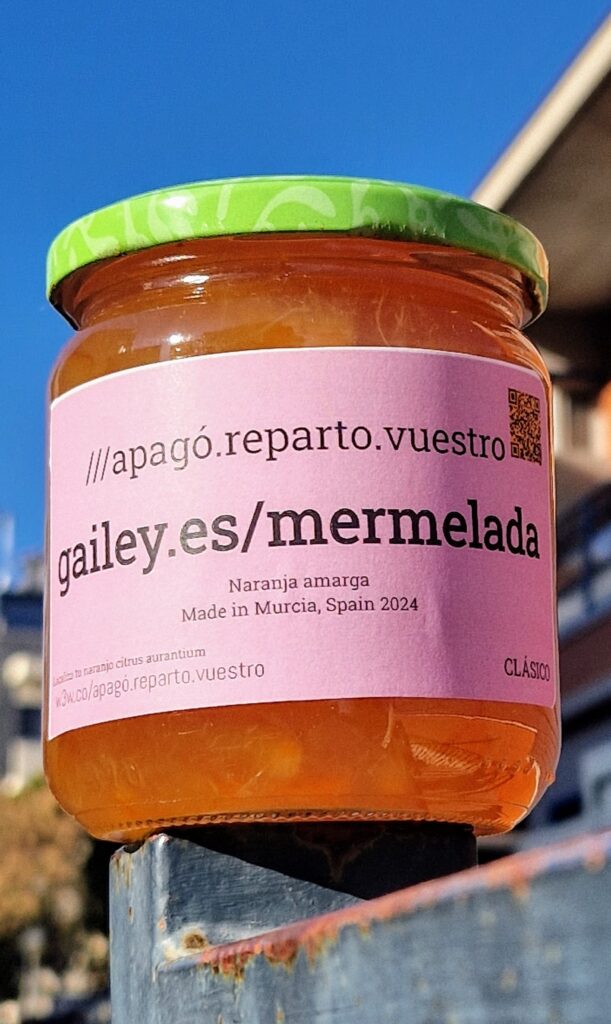
Citrus × aurantium, (Wikipedia), adorns the streets of Murcia and so many other streets of the cities of Spain, but few avail themselves of them despite how delicious they are.
Commercial marmalade is, for my taste, too sweet and since I made mine, as with home made pizza, I have never purchased from a supermarket again.
What type of marmalade do you make?
As all the oranges are of the Seville orange bitter sort, all the marmalade I make is bitter.
The difference between mine and that of the supermarket sort, is that I use less sugar.
Supermarket marmalade is 200% sugar relative to fruit, and nearly all recipes advise this proportion.
My marmalade preserves a rich orange flavour with sufficient sweetness.
Yet my sweetness ratio of sugar is about 140%.
From the tree to the jar, barely a few days elapse instead of weeks or even months. My marmalade is the freshest available.
I use all of the orange, it’s natural pectin, water, and plain white sugar.
I avoid brown sugar as it tends to over darken the marmalade.
Also, those commercial marmalades contain all kinds of unnatural additives. Not mine.
What variant of marmalade do you make?
For this harvest I prepared the following variants:
- Classic
- All the marmalade contains 15% lemon, it lends more acidity, more pectin so that it sets, and maintains a lighter colour.
- Lime
- A variant even more acidic.
- Whisky
- With a touch of Scottish and more bitterness.
- Grapefruit
- Citrus paradisi. Acidic and rosy.
- Ginger
- I add crystalised ginger during cooking. Keeps it a tad spicy.
- Alcaraz
- Sweeter, less bitter. Happy and tenancious. For champions.
This year I hope to experiment with other variants, maybe cardamom, cinnamon. chilli, saffron, or paprika.
AlcarazHot is my first savoury experiment as a marmalade chilli jam condiment.
If something springs to mind, let me know.
How do you harvest the oranges?
I collect about ten at a time, maximum eleven from each tree.
More than that does not fit in the pan in one go.
I trim them, but keep their storks and leaves to preserve their freshness until the cooking moment.
When do you harvest?
The bitter orange harvest is at its peak between Christmas and mid January.
I harvest during the first few days of the new year before the fruit falls to the ground or the local council collect them.
I devote the month of January to produce marmalade in batches of ten jars a time every two days between preparation, soaking, and cooking.
The home smells glorious during January.
What areas for you harvest from?
The Association for the Defense of the Bitter Orange (ADNA in spanish) has advised since a while ago that there is a «high risk» of using this fruit from the city due to the fact «it’s skin absorbs contaminants from urban pollution such as lead and heavy metals from vehicle exhausts».
That’s in part why I harvest from areas way far away from high traffic areas and city contamination.
You can verify that from the label.
At the start of the year council workers collect the city oranges and prune the trees as the fruit stains the streets and becomes a pedestrian hazard.
Sometimes they use these machines.
Although the traditional method of the worker shaking the tree is more commonplace.

Occasionally companies harvest them for export although I understand that the majority are destroyed, some are used to feed livestock, or some industrial and cosmetics use.
Marmalade on the map
Previously I named each jar by the street names where the trees were located.
The 2023 harvest boasted jar names such as: Torre de los Morenos, Jara Carrillo, Edición Alcaraz, Santomera.
But this time I’ve gone a step further, and now you can verify exactly where each jar originates from, the precise location of it’s particular orange tree, thanks to the web service of what3words.
What is what3words?

Traditional postal addresses lack sufficient accuracy to specify precise locations, such as the entrance to a building, and many locations, such as parks and rural areas, do not have addresses.
This makes it difficult to locate some places and impossible to pinpoint the exact location of for exampe, a load of orange trees.
what3words is a mapping service that has divided the world into 3 x 3 m squares and assigned each a unique combination of three words.
It allows you to share exact coordinates more accurately and easily.
What’s that got to do with marmalade?
I have used this service to identify and annotate precisely where the selected trees on the outskirts of Murcia are for this 2024 harvest and have then photographed each tree.
Each tree therefore has a specific three word algorithm assigned name and a link so you can click through and view their exact location on the map.
If you want to view the orange tree of your marmalade with a satellite view, download the what3words app or view it in your browser. It’s a free app.
I’ve watered more than half of the 2024 trees during the autumnal drought we suffered in Murcia with green water from my swimming pool.
Orange tree photo gallery
To follow is the gallery of all the 2024 trees.
The marmalade originates from these babied trees from Murcia.
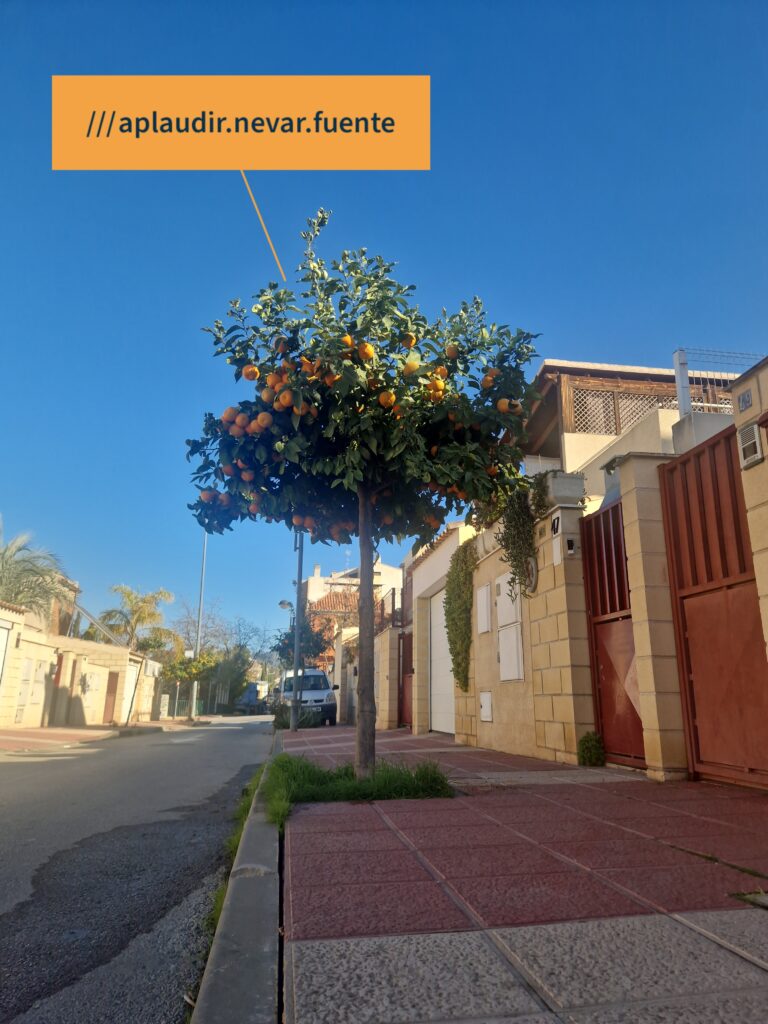
flukes.ties.scowls
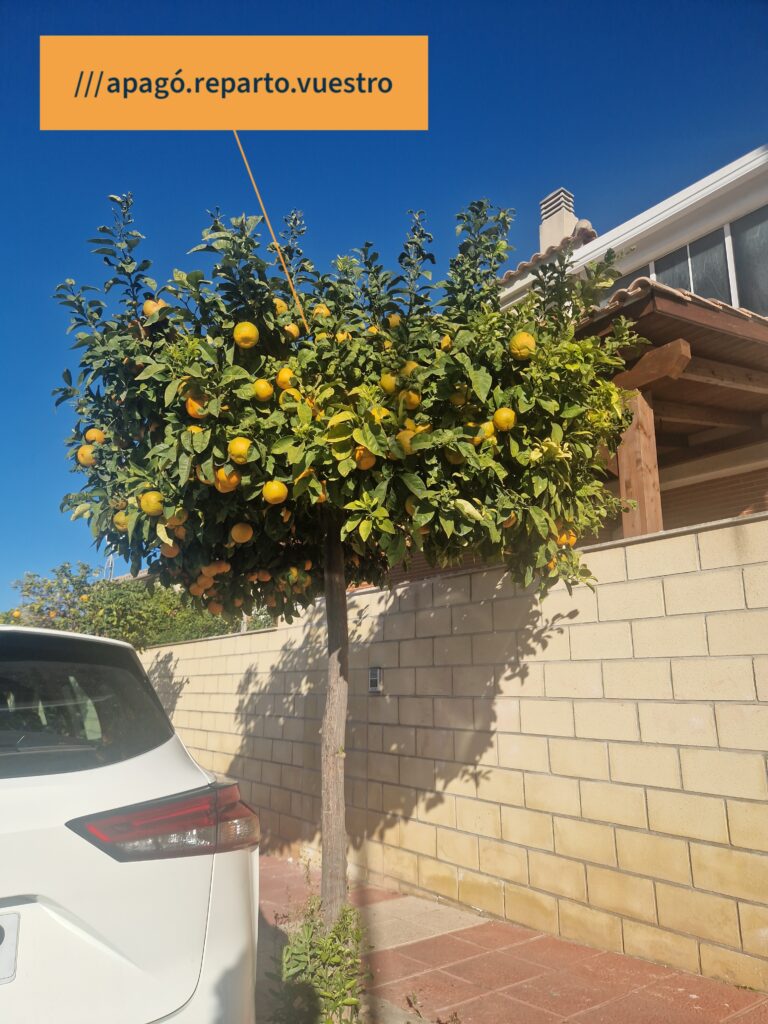
elects.domestic.lush
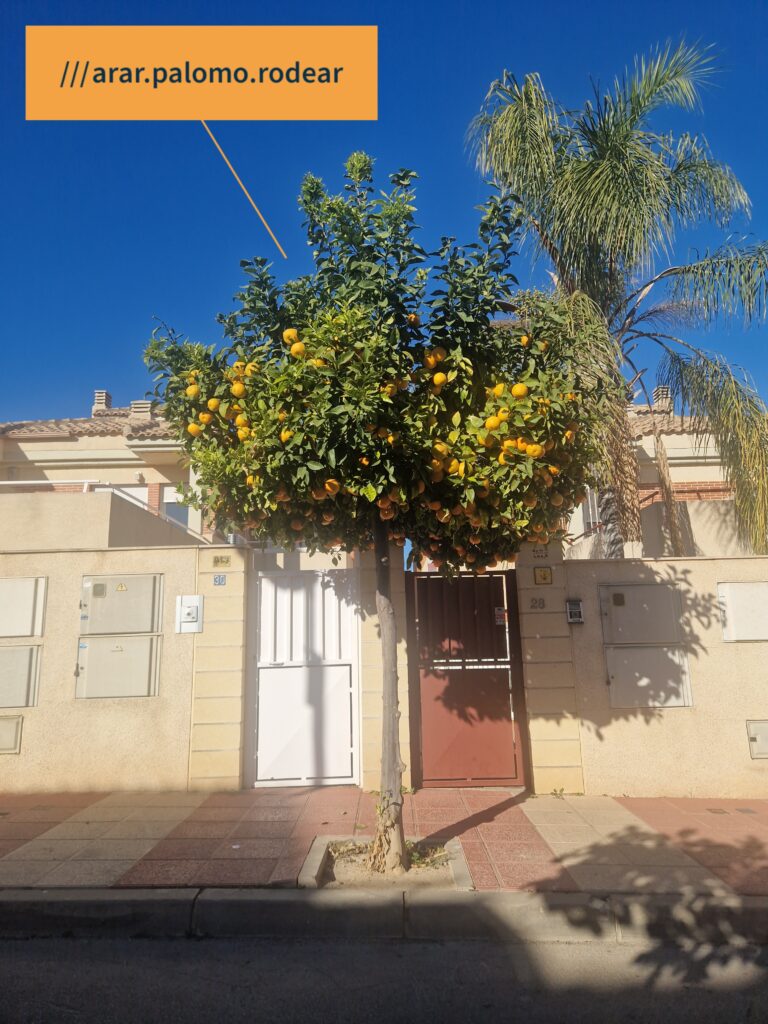
flaking.bother.hamster
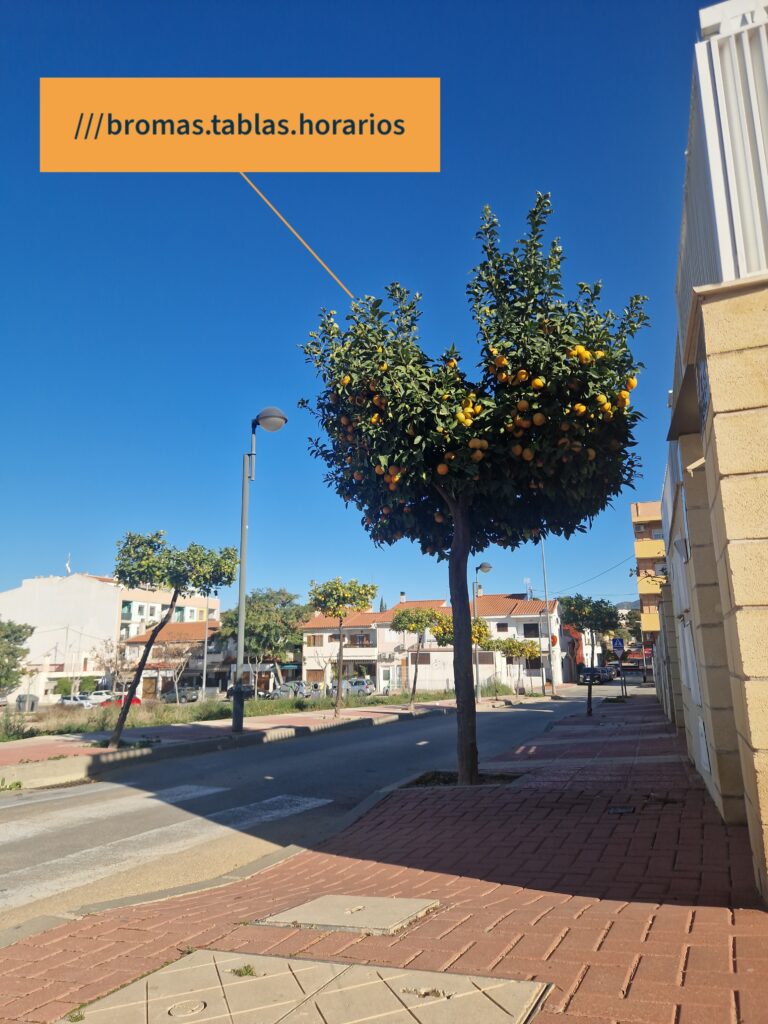
postage.teachers.admit
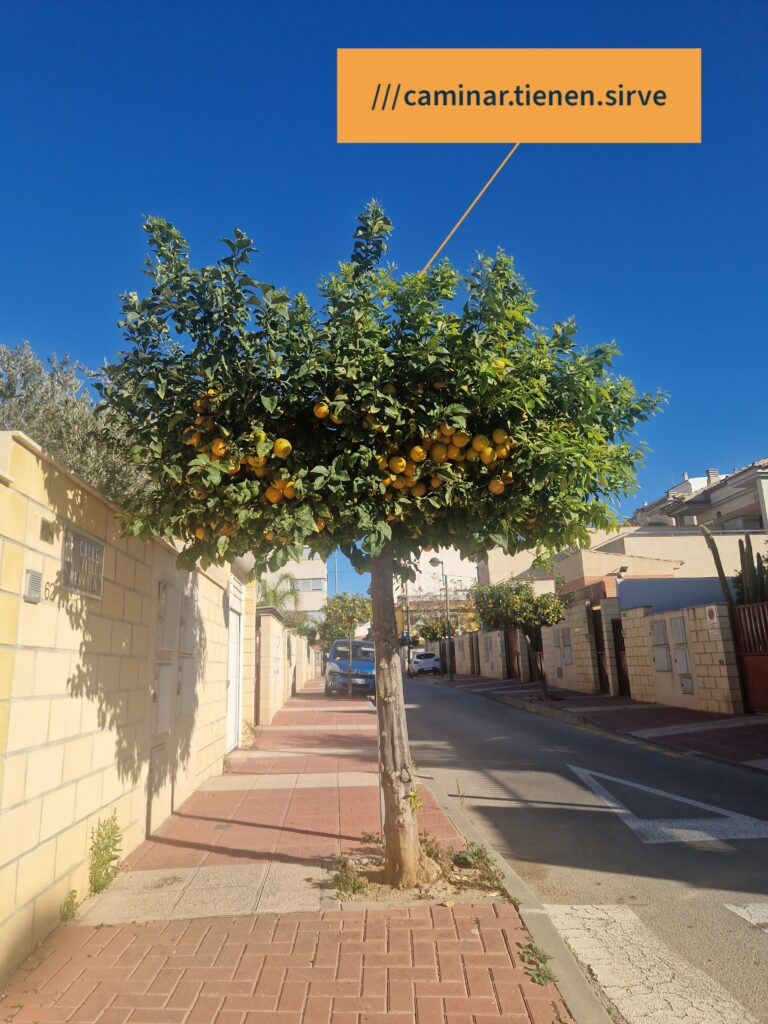
internal.bugs.bought
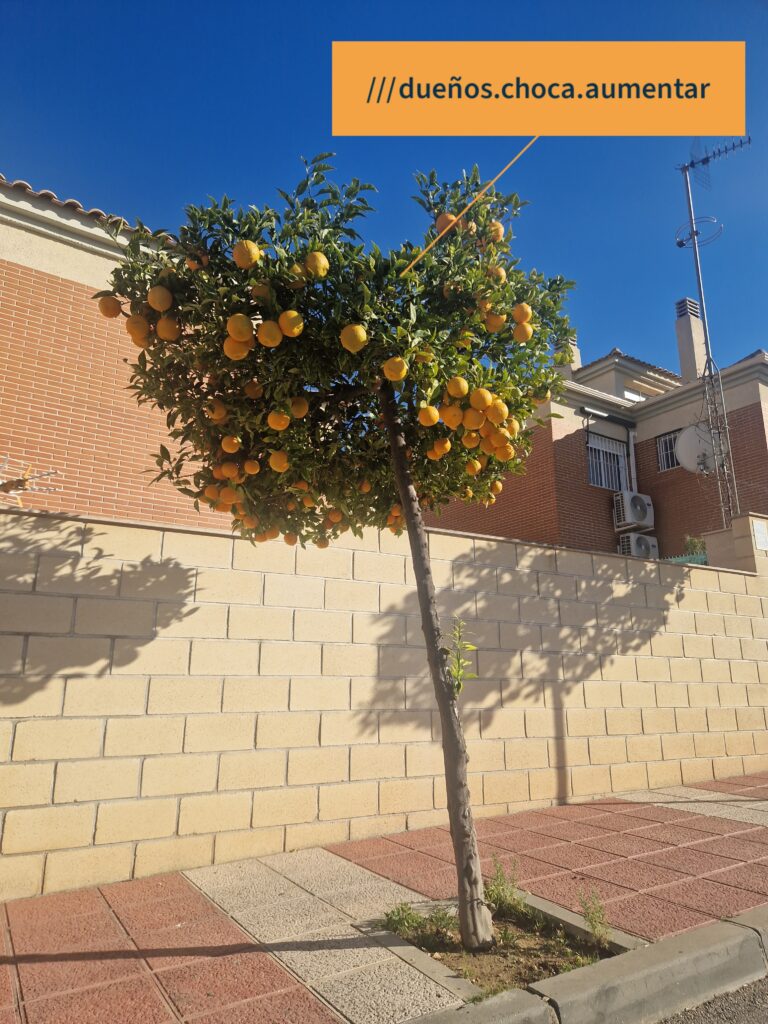
stopped.mostly.cheat
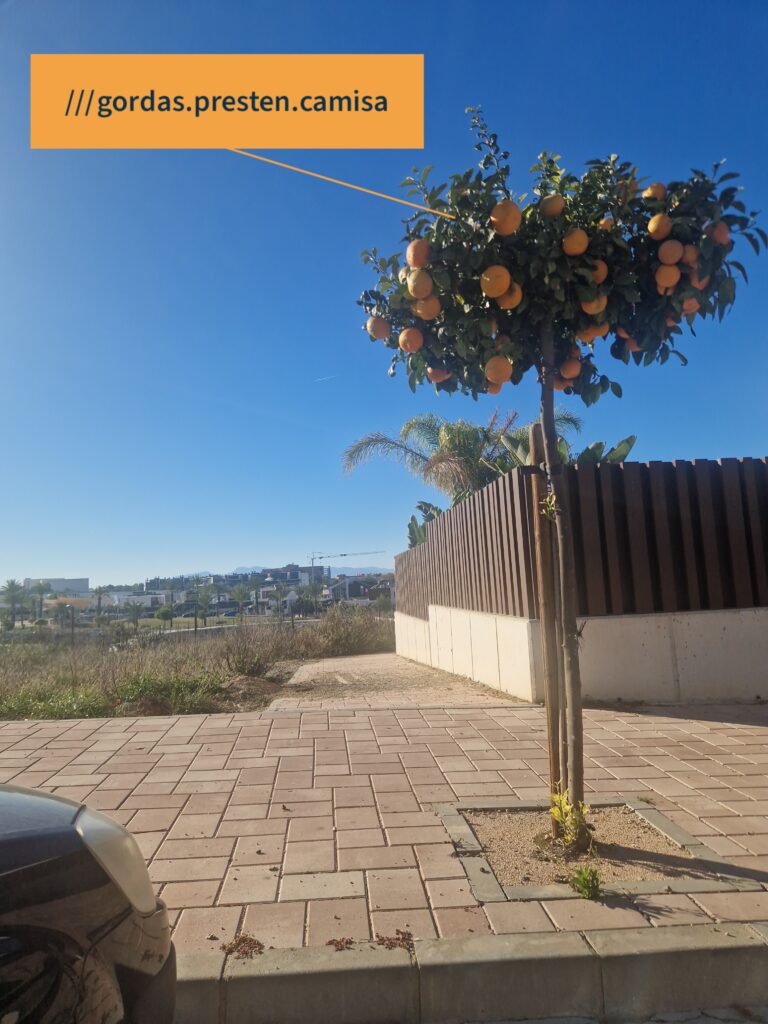
cook.tracking.lakes
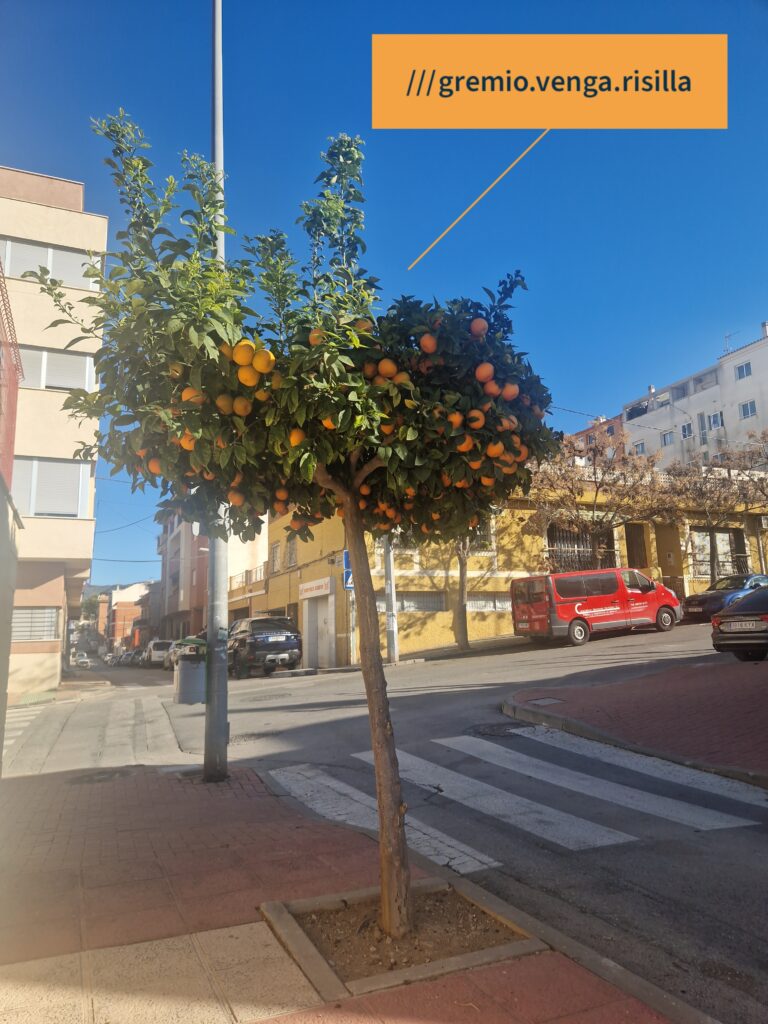
level.before.charging

liability.sweated.slimy
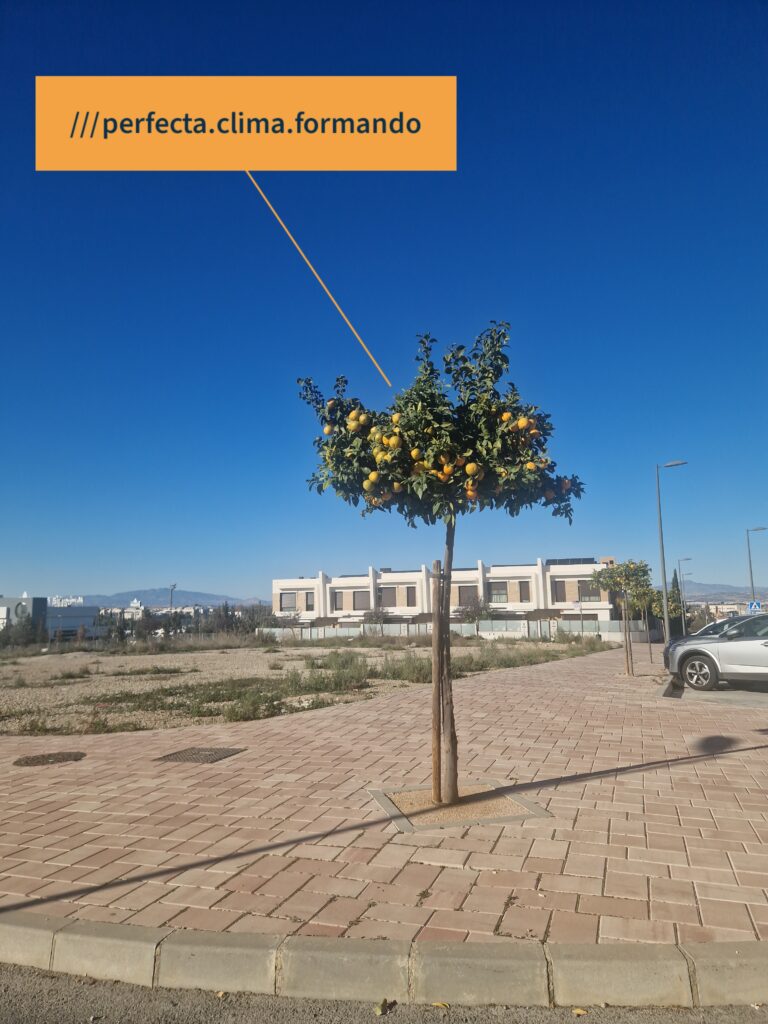
elbow.waxing.curtains
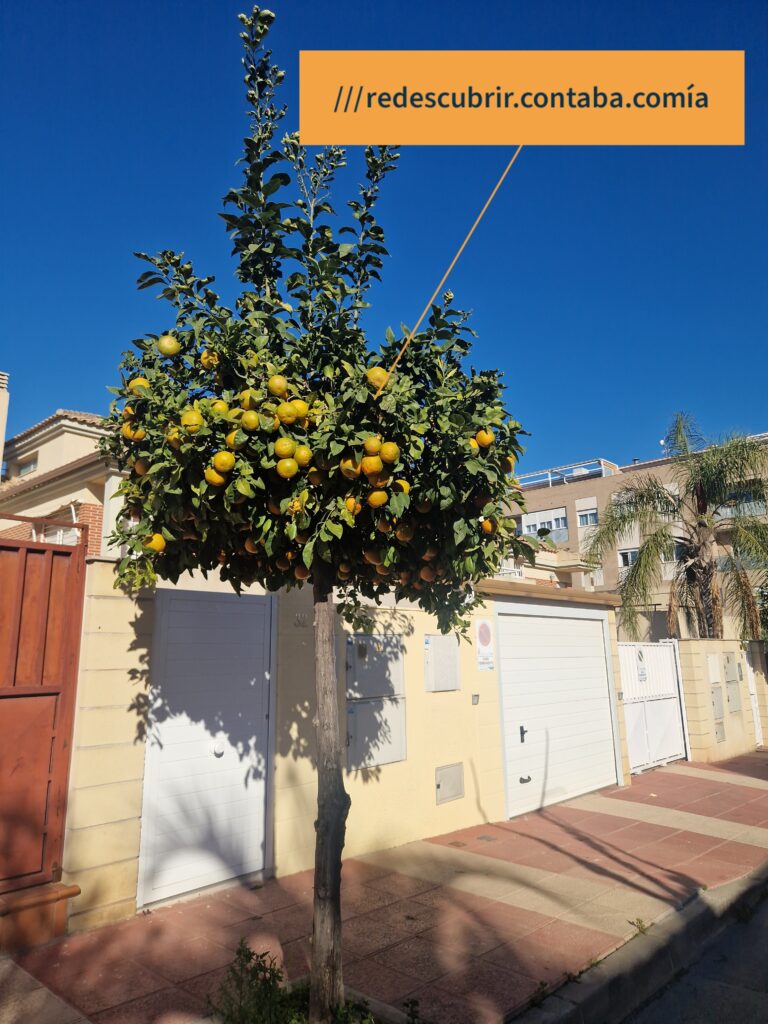
buddy.alarm.lure

pipe.dabble.actor

slimmer.crash.space
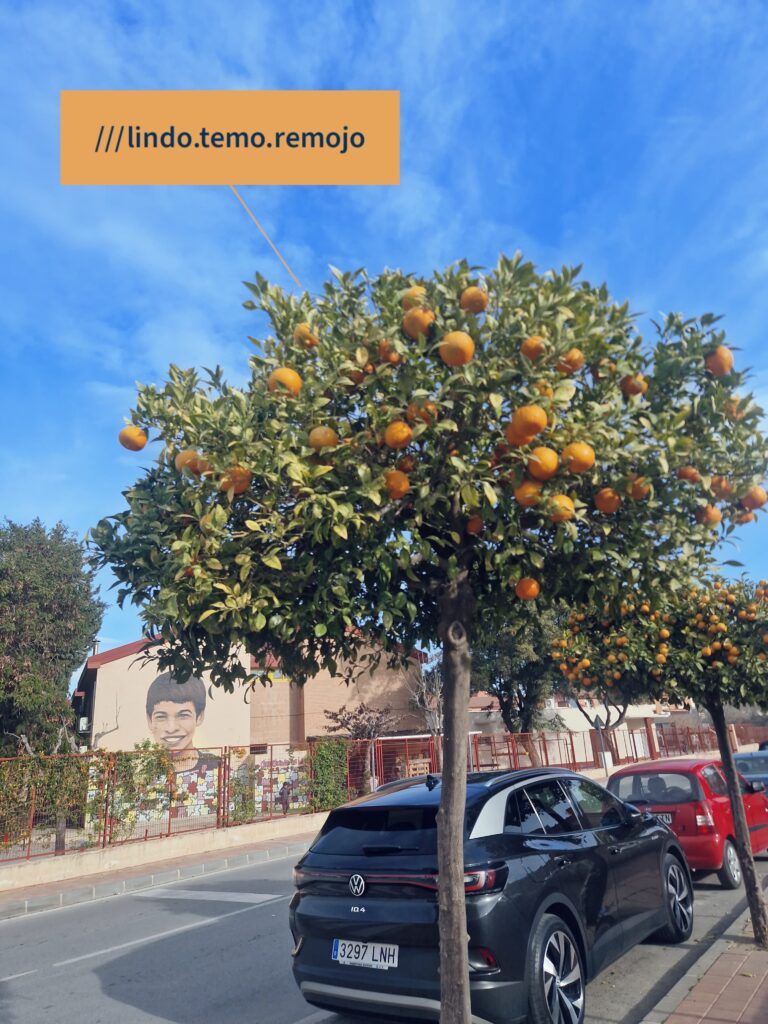
styled.exposes.turns
Carlos Alcaraz Edition
This last tree in the gallery, the aptly named /// styled.exposes.turns, fruits in honour of the champion tennis neighbour, one Carlos Alcaraz, this tree is located infront of his old school where his mural adorns the outer walls of it’s most famous ex-pupil.
The named orange trees and their links on the map
To follow are the 2024 orange trees, with their marmalade variants, their production totals, remaining availability of each in real time and their map links in spanish and english.
I also include their taste notes and the sensations they evoke.
2024 harvest available/production: 25/80 (@21.18 25/9/2025)
Classic…with limón – 7/43
| Spanish | English |
|---|---|
| 🌳apagó.reparto.vuestro 0/12 | 🌳elects.domestic.lush 0/12 |
| Brillante, medio amargo, fresco, temprano. | Bright, mid bitter, fresh, early |
| 🌳gordas.presten.camisa 1/11 | 🌳cook.tracking.lakes 1/11 |
| Brillante, suave, fresco, temprano | Bright, mild, fresh, early |
| 🌳perfecta.clima.formando 3/12 | 🌳elbow.waxing.curtains 3/12 |
| Brillante, fresco, nítido, más fino | Bright, fresh, sharp, thinner |
| 🌳sirva.encontró.lluvia 3/8 | 🌳slimmer.crash.space 3/8 |
| Azúcar picante, más oscuro y calentado, frascos más grandes | Tangy, darker, heated sugar, larger jars |
Lime – 8/13
| Spanish | English |
|---|---|
| 🌳aplaudir.nevar.fuente 8/13 | 🌳flukes.ties.scowls 8/13 |
| Tarros más dulces, cítricos, picantes y de tamaño mediano | Sweeter, citric, zesty, mid size jars |
Whisky – 0/4
| Spanish | English |
|---|---|
| 🌳gremio.venga.risilla 0/4 | 🌳level.before.charging 0/4 |
| Corte fino, más suave, sofisticado | Fine cut, smoother, sophisticated |
Ginger – 0/3
| Spanish | English |
|---|---|
| 🌳dueños.choca.aumentar 0/3 | 🌳stopped.mostly.cheat 0/3 |
| Picante, cálido, super fino | Spicy, warm, super fine |
Grapefruit – 1/5
| Spanish | English |
|---|---|
| 🌳dueños.choca.aumentar 1/5 | 🌳stopped.mostly.cheat 1/5 |
| Un poco rosa, un poco más woah | A bit pink, a bit more woah |
Alcaraz Sweet – 6/7
| Spanish | English |
|---|---|
| 🌳lindo.temo.remojo 6/7 | 🌳styled.exposes.turns 6/7 |
| Picante, líquida, más dulce, excitante, campeona. | Zesty, runny, sweeter, exciting, champion |
Alcaraz Hot – 3/5
| Spanish | English |
|---|---|
| 🌳lindo.temo.remojo 3/5 | 🌳styled.exposes.turns 3/5 |
| Guindilla, ajo, pimientos rojos, vinagre, lima, sal, azúcar, rápido, líquido | Chilli, garlic, red peppers, vinegar, lime, salt, sugar, fast, fluid |
Recipe
After a few years, I think I’ve sussed the recipe now.
There’s no mystery. That said I regards some recipes out there to be deeply flawed in terms of their preparation and cooking methods.
They use sweet Valencian oranges, over boil the pectin in turn destroying it, some discard half the orange or add dehydrated pectin, use blenders, or over complicate the process and commit other desperate peccadilloes.
My preferred recipe is here: YouTube.
Although I have adjusted a few things, I reduce the cooking time, perhaps because my fruit is so fresh, it’s a traditional recipe but the result is outstanding.
After cutting the skin into stripes, I separate the pips, leave them to soak for 24-36 hours.
I leave the pips covered in a glass of water and in a few hours or less the pectin turns them into a semi-solid gel.
Cooking the marmalade the next day takes about an hour and half in total for an optimal result.
Each ten orange batch takes me about two hours of kitchen toil.
Labels
The jars are between 180g to 300 grams of marmalade.
I re-use jars that I accumulate during the year.
Mostly from brines and pickles, gherkins, jars of sprouts, shredded carrot.
Each jar is labelled with their what3words name of the exact location of it’s corresponding orange tree and it’s link to the map where you can check it’s place on the planet.

Sometimes I make large jars, sometimes small.
Jars average about 350 grams.
Nothing else matters
I cut this Marmalade Edit.
Order
Pay delivery
To send a package by Correos (national postal service), in mainland Spain, that weighs under 2kg costs approximately €7.
Pay €7 by Bizum to 610 454 800 or to my PayPal by card

I’ll post you the package by Correos and in a few days you’ll have it delivered to your doorstep.
Delivery beyond mainland Spain will cost more, contact me.
But why marmalade?
Send me a photo or video on social media enjoying your jam.
Enjoy the orange marvel!
¿Why marmalade?
Because nothing else matteres.

